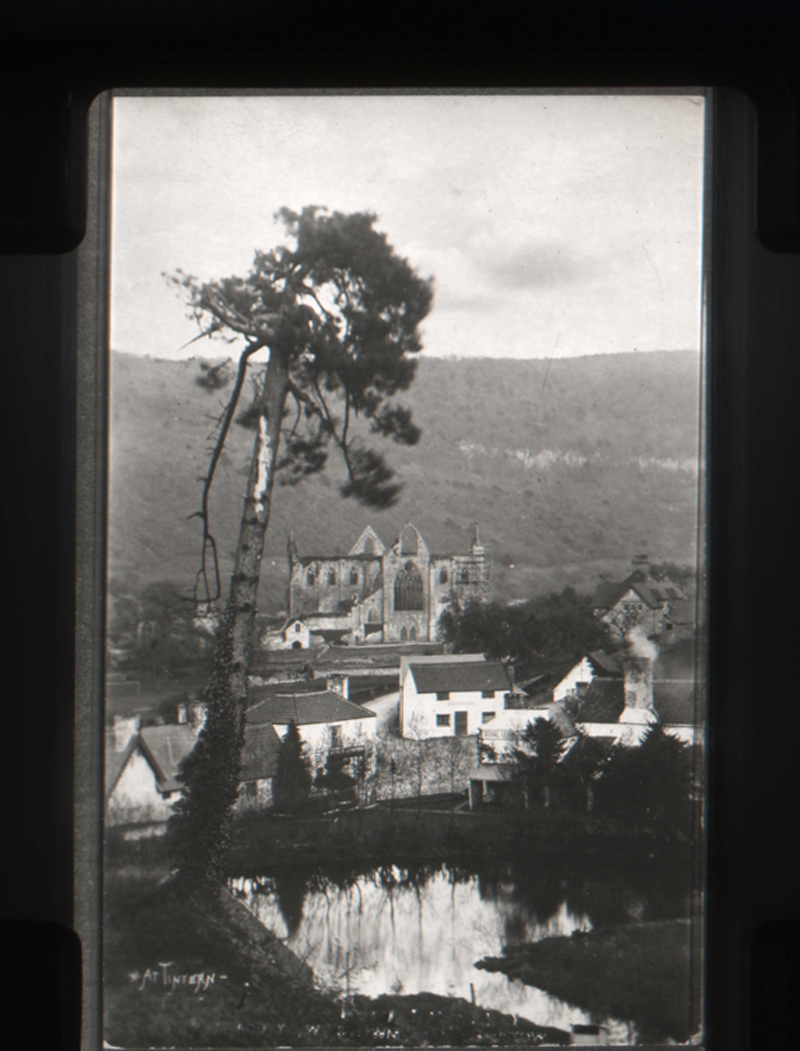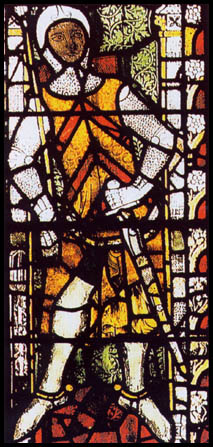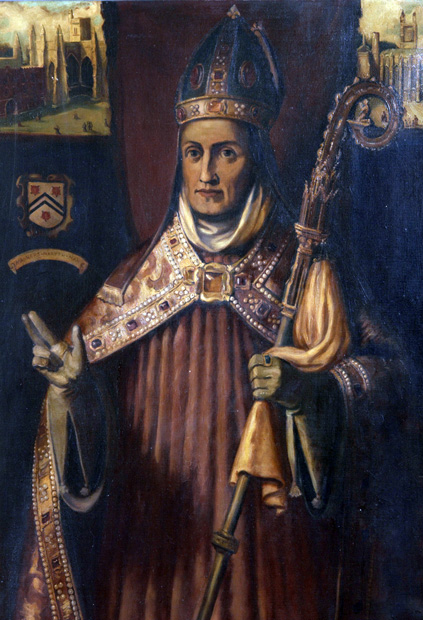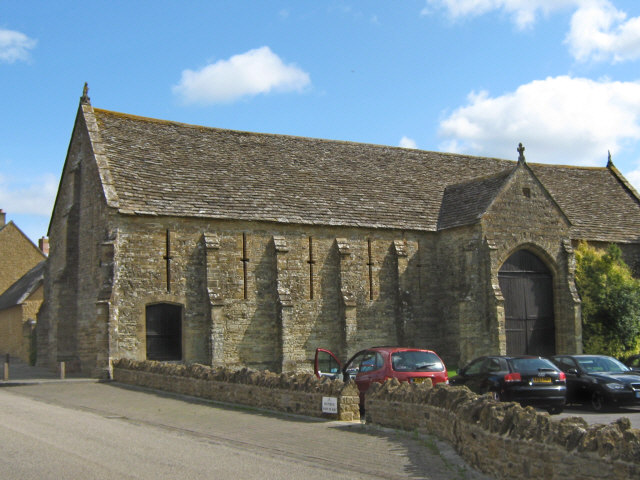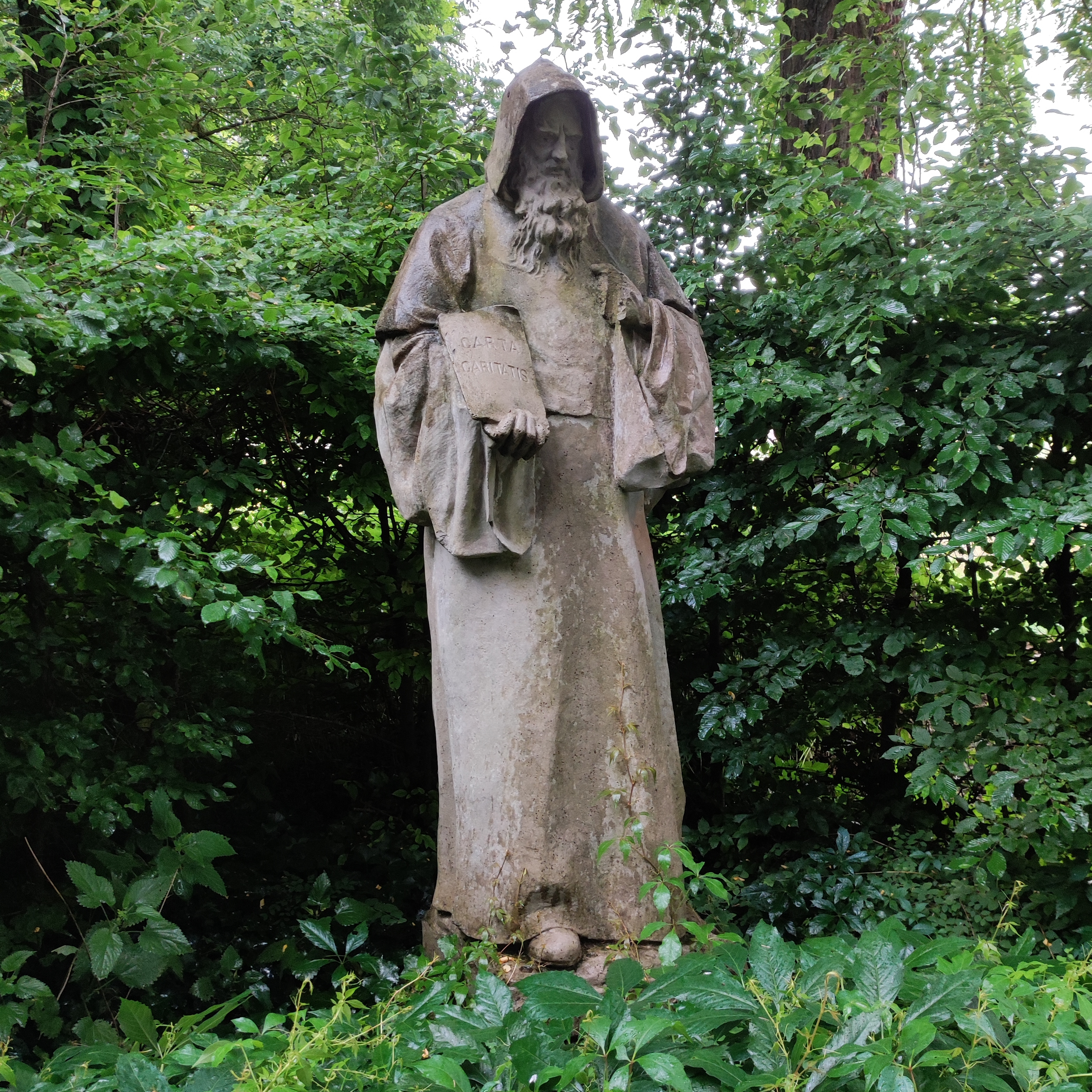|
Tintern Abbey
Tintern Abbey ( ) is a ruined medieval abbey situated adjacent to the village of Tintern in Monmouthshire, on the Welsh bank of the River Wye, which at this location forms the border between Monmouthshire in Wales and Gloucestershire in England. Founded on 9 May 1131 by Walter de Clare, Lord of Chepstow, it was the first Cistercian foundation in Wales, and only the second in Britain in the Middle Ages, Britain (after Waverley Abbey). The abbey fell into ruin after the Dissolution of the Monasteries in the 16th century. Its remains have been celebrated in poetry and painting from the 18th century onwards. In 1984, Cadw took over responsibility for managing the site. Tintern Abbey is visited by approximately 70,000 people every year. History Earliest history The Monmouthshire writer Fred Hando records the tradition of Tewdrig, King of Glywysing who retired to a hermitage above the river at Tintern. He then emerged to lead his son's army to victory against the Saxons at P ... [...More Info...] [...Related Items...] OR: [Wikipedia] [Google] [Baidu] |
Tintern
Tintern () is a village in the community (Wales), community of Wye Valley (community), Wye Valley, on the west bank of the River Wye in Monmouthshire, Wales, close to the border with England, about north of Chepstow. It is popular with tourists, in particular for the scenery and the ruined Tintern Abbey. Modern Tintern has been formed by the coalescence of two historic villages: Tintern Parva, forming the northern end of the village, and Chapel Hill, which forms the southern end. The village is designated as a Conservation Area (United Kingdom), Conservation Area. In 2022 the community was renamed from "Tintern" to "Wye Valley" and had boundary changes. History Early history The name Tintern may derive from the Welsh ''din'' + ''d/teyrn'', meaning "rocks of the king".E. T. Davies, ''A History of the Parish of Mathern'', 1990 A Ford (crossing), ford, known as Tintern Ford, stretched across the tidal River Wye and was in use in Roman times. After the Romans withdrew from Wales ... [...More Info...] [...Related Items...] OR: [Wikipedia] [Google] [Baidu] |
Saxons
The Saxons, sometimes called the Old Saxons or Continental Saxons, were a Germanic people of early medieval "Old" Saxony () which became a Carolingian " stem duchy" in 804, in what is now northern Germany. Many of their neighbours were, like them, speakers of West Germanic dialects, including the inland Franks and Thuringians to the south, and the coastal Frisians and Angles to the north who were among the peoples who were originally referred to as "Saxons" in the context of early raiding and settlements in Roman Britain and Gaul. To their east were Obotrites and other Slavic-speaking peoples. The political history of these continental Saxons is unclear until the 8th century and the conflict between their semi-legendary hero Widukind and the Frankish emperor Charlemagne. They do not appear to have been politically united until the generations leading up to that conflict, and before then they were reportedly ruled by regional "satraps". Previous Frankish rulers of Austrasia ... [...More Info...] [...Related Items...] OR: [Wikipedia] [Google] [Baidu] |
De Clare
The House of Clare was a prominent Anglo-Norman noble house that ruled the Earldoms of Pembroke, Hertford and Gloucester in England and Wales throughout its history, playing a prominent role in the Norman invasion of Ireland. They were descended from Richard Fitz Gilbert, Lord of Clare (1035–1090), a kinsman of William the Conqueror who accompanied him into England during the Norman conquest of England. His great-grandfather was Richard I of Normandy who was the son of William Longsword and the grandson of the Viking Rollo. As a reward for his service, Richard was given lands in Suffolk centred on the village of Clare. As a result, Richard and his descendants carried the name of 'de Clare' or 'of Clare'. The de Clares ranked among the greatest baronial houses of the early Middle Ages and were the proprietors of the monumental Caerphilly Castle, Pembroke Castle, Castell Coch, and over 190 manors in England. Origins The Clare family derived in the male line from Gilb ... [...More Info...] [...Related Items...] OR: [Wikipedia] [Google] [Baidu] |
Surrey
Surrey () is a Ceremonial counties of England, ceremonial county in South East England. It is bordered by Greater London to the northeast, Kent to the east, East Sussex, East and West Sussex to the south, and Hampshire and Berkshire to the west. The largest settlement is Woking. The county has an area of and a population of 1,214,540. Much of the north of the county forms part of the Greater London Built-up Area, which includes the Suburb, suburbs within the M25 motorway as well as Woking (103,900), Guildford (77,057), and Leatherhead (32,522). The west of the county contains part of Farnborough/Aldershot built-up area, built-up area which includes Camberley, Farnham, and Frimley and which extends into Hampshire and Berkshire. The south of the county is rural, and its largest settlements are Horley (22,693) and Godalming (22,689). For Local government in England, local government purposes Surrey is a non-metropolitan county with eleven districts. The county historically includ ... [...More Info...] [...Related Items...] OR: [Wikipedia] [Google] [Baidu] |
Bishop Of Winchester
The Bishop of Winchester is the diocesan bishop of the Diocese of Winchester in the Church of England. The bishop's seat (''cathedra'') is at Winchester Cathedral in Hampshire. The Bishop of Winchester has always held ''ex officio'' the office of Prelate of the Order of the Garter, Most Noble Order of the Garter since its foundation in 1348. except during the period of the Commonwealth of England, Commonwealth until the Stuart Restoration, Restoration of the Monarchy. Bishops of Winchester also often held the positions of Lord Treasurer and Lord Chancellor ''ex officio''. During the Middle Ages, the Diocese of Winchester was one of the wealthiest English sees, and its bishops have included a number of politically prominent Englishmen, notably the 9th century Saint Swithun and medieval magnates including William of Wykeham and Henry of Blois. The Bishop of Winchester is appointed by the Crown, and is one of five Church of England bishops who sit ''ex officio'' among the 26 Lo ... [...More Info...] [...Related Items...] OR: [Wikipedia] [Google] [Baidu] |
William Giffard
William Giffard (), was the Lord Chancellor of William II and Henry I, from 1093 to 1101, and Bishop of Winchester (1100–1129). Family and early life Giffard was the son of Walter and Ermengarde, daughter of Gerard Flaitel. Giffard was the brother of Walter and the sister of Rohese, wife of Richard fitz Gilbert. He held the office of Dean of Rouen. Lord Chancellor Giffard was Lord Chancellor under William II and Henry I from 1093 to 1101. Bishop of Winchester On 3 August 1100 he became bishop of Winchester by nomination of Henry I. Henry nominated him probably in an attempt to win the support of the clergy in Henry's bid to claim the throne directly after the death of William Rufus. He was one of the bishops elect whom Archbishop Anselm of Canterbury refused to consecrate in 1101 as having been nominated and invested by the lay power. During the investitures dispute Giffard was on friendly terms with Anselm and was banished for declining to accept consecr ... [...More Info...] [...Related Items...] OR: [Wikipedia] [Google] [Baidu] |
Monastic Grange
Monastic granges were outlying landholdings held by Monastery, monasteries independent of the Manorialism, manorial system. The first granges were owned by the Cistercians, and other orders followed. Wealthy monastic houses had many granges, most of which were largely agricultural providing food for the monastic community. A grange might be established adjacent to the monastery, but others were established wherever it held lands, some at a considerable distance. Some granges were worked by lay-brothers belonging to the order, others by paid labourers. Granges could be of six known types: agrarian; sheep runs; cattle ranges and holdings; horse studs; fisheries; industrial complexes. Industrial granges were significant in the development of medieval industries, particularly iron working. Description Granges were landed estates used for food production, centred on a farm and out-buildings and possibly a mill or a tithe barn. The word ''grange'' comes through French from Latin , ... [...More Info...] [...Related Items...] OR: [Wikipedia] [Google] [Baidu] |
Obedience, Poverty, Chastity
In Christianity, the three evangelical counsels, or counsels of perfection, are chastity, poverty (or perfect charity), and obedience. As stated by Jesus in the canonical gospels, they are counsels for those who desire to become "perfect" (, ). The Catholic Church interprets this to mean that they are not binding upon all, and hence not necessary conditions to attain eternal life (heaven), but that they are " acts of supererogation", "over and above" the minimum stipulated in the biblical commandments. Catholics who have made a public profession to order their lives by the evangelical counsels, and confirmed this by public vows before their competent church authority (the act of religious commitment known as a profession), are recognised as members of the consecrated life. Consecrated life There are early forms of religious vows in the monastic traditions. The Rule of Saint Benedict (ch. 58.17) indicates that the newly received promise stability, fidelity to monastic life, a ... [...More Info...] [...Related Items...] OR: [Wikipedia] [Google] [Baidu] |
Carta Caritatis
''Carta Caritatis'' () is the constitution of the Cistercian Order. The document, approbated in 1119 by Pope Calixtus II, regulates relations among the Cistercian abbeys. The text was continually revised and adapted until 1155. In terms of canon law, the Carta Caritatis is a document of unprecedented significance, since it introduced the systematic regulations that made a group of monks at Cîteaux into the first religious order in Church history. It is held in high esteem as a legal monument of great influence. Name The name ''Carta Caritatis'' is often misunderstood as referring to mystical unions or the ties of friendship in the monastic community. In fact, the text is quite technical and concerned with administrative matters. The "charity" in the title comes from the fact that when new monasteries were founded, they were not forced to make financial contributions to the abbeys that founded them. Such payments had caused problems in the monastic family of Cluny which preced ... [...More Info...] [...Related Items...] OR: [Wikipedia] [Google] [Baidu] |
Lay Brother
Lay brother is a largely extinct term referring to religious brothers, particularly in the Catholic Church, who focused upon manual service and secular matters, and were distinguished from choir monks or friars in that they did not pray in choir, and from clerics, in that they were not in possession of (or preparing for) holy orders. In female religious institutes, the equivalent role is the lay sister. Lay brothers were originally created to allow those who were skilled in particular crafts or did not have the required education to study for holy orders to participate in and contribute to the life of a religious order. History “In early Western monasticism, there was no distinction between lay and choir religious. The majority of St. Benedict's monks were not clerics, and all performed manual labour, the word ''conversi'' being used only to designate those who had received the habit late in life, to distinguish them from the '' oblati'' and ''nutriti''. But, by the beginni ... [...More Info...] [...Related Items...] OR: [Wikipedia] [Google] [Baidu] |
Ora Et Labora
The phrases "pray and work" (or "pray and labor"; ) and to work is to pray () refer to the monastic practice of working and praying, generally associated with its use in the Rule of Saint Benedict. History ''Ora et labora'' is the traditional slogan of the Benedictines. This derives from Benedict's desire for his monks to have balanced lives, dominated by neither work nor prayer. St. Benedict's Rule prescribes periods of work for the monks for "Idleness is the enemy of the soul" (RB 48.1). Some orders applied the concept directly to farm work and became an element in the movement towards land reclamation from rot and agricultural development in Western Europe. Other orders, such as the Humiliati, applied the concept to the production of woolen cloth using wheels in the period prior to the Industrial Revolution. Modern examples The phrase expresses the need to balance prayer and work in monastic settings and has been used in many religious communities from the Middle Ages onw ... [...More Info...] [...Related Items...] OR: [Wikipedia] [Google] [Baidu] |
Rule Of Saint Benedict
The ''Rule of Saint Benedict'' () is a book of precepts written in Latin by St. Benedict of Nursia (c. AD 480–550) for monks living communally under the authority of an abbot. The spirit of Saint Benedict's Rule is summed up in the motto of the Benedictine Confederation: ''pax'' ("peace") and the traditional ''ora et labora'' ("pray and work"). Compared to other precepts, the Rule provides a moderate path between individual zeal and formulaic institutionalism; because of this middle ground, it has been widely popular. Benedict's concerns were his views of the needs of monks in a community environment: namely, to establish due order, to foster an understanding of the relational nature of human beings, and to provide a spiritual father to support and strengthen the individual's ascetic effort and the spiritual growth that is required for the fulfillment of the human vocation, theosis. The ''Rule of Saint Benedict'' has been used by Benedictines for 15 centuries, and thus St. Be ... [...More Info...] [...Related Items...] OR: [Wikipedia] [Google] [Baidu] |

